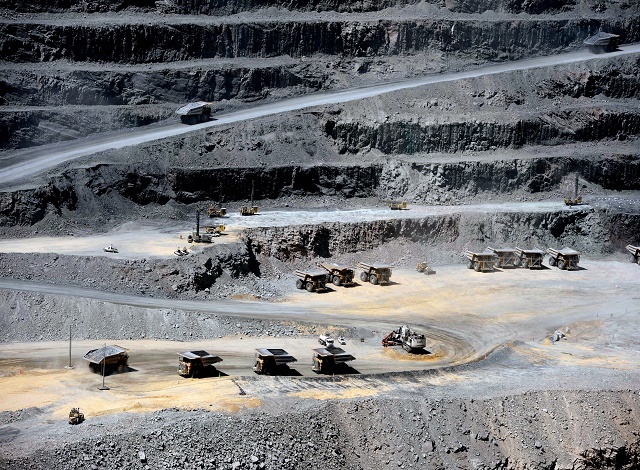Africa mining sector meets amid commodity price comeback

View taken on October 4, 2016 in Jwaneng, shows the Jwaneng mine of Debswana, the world's leading producer of diamonds by value in Botswana. (MONIRUL BHUIYAN / AFP)
(AFP) - Investors and mining firms gather Monday at Africa's biggest industry conference amid a newfound optimism that the uptick in commodity prices could shore up investment after years of downturn.
The annual four-day Mining Indaba in Cape Town takes place as demand in China, one of the world's biggest consumers, begins to stabilise.
Commodities like iron, copper and tin are soaring to new heights, raising hope among analysts that this year's conference may spur funding for new mining ventures.
"A lot of these prices are up 100 percent from what they were a year before, some only fifty percent, but some three or four hundred percent, so this should be the biggest Indaba we've seen in a couple (of) years," said Peter Major, mining analyst at Cadiz Corporate Solutions.
The devastating price slump saw several commodity-dependent economies across Africa stagnate, with companies cutting jobs and some shutting down operations.
Africa's biggest copper producers Zambia and the Democratic Republic of Congo (DRC) were among the worst hit, with thousand of jobs lost over the last three years.
The jobs bloodbath also hit South Africa, the continent's most diversified economy which is battling poor growth.
The World Bank's latest commodities forecast, however, confirms the worst is finally over, with prices on a solid climb thanks to strong Chinese demand and a tightening supply.
Copper prices jumped 10 percent in the last quarter of 2016, "the first double-digit quarterly gain in nearly five years", the report said.
The bank is now projecting metals prices to rise by 11 percent in 2017, a significant improvement from an earlier forecast of just 4 percent.
- US boost? -
"Policy efforts by China to boost commodity-intensive infrastructure and construction sectors were a key driver of demand last year,” the report said.
"Prices also received a boost following the US election on expectations of higher infrastructure investment and increased optimism for the global economy."
By the end of 2016, iron ore was selling at $80 a tonne, nearly double its price a year earlier, and metals like zinc were both up for the fourth straight quarter.
Although the mood was shifting, Major warned against being overly excited about improvement, saying it looked like an "over-recovery" and adding "I don't trust it".
Rene Hochreiter, an analyst at Noah Capital Markets, said the prices would return to the mean "sooner or later".
"There might be a bit of euphoria at the moment with it shooting over the mean and it will come back down, but that doesn't mean it's going to go negative," he told AFP.
"I just hope this time it's not a false start," he added. "I've seen too many of those and I don't want to get too excited, but it feels a lot better than it has for a number of years."
Recovery optimism has also been reflected in conference numbers, with delegate registrations up year-on-year for the first time "in quite a few years", according to organisers.
Slow mining production had been cited as one of the major contributors to South Africa's poor growth, currently at an annualised 0.2 percent.
The country exports a slew of resources including platinum, gold and diamonds, but companies must navigate a volatile strike-prone labour force and legislative red tape.
© 1994-2017 Agence France-Presse





